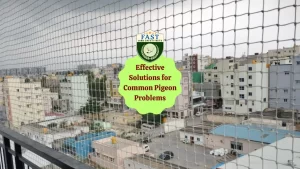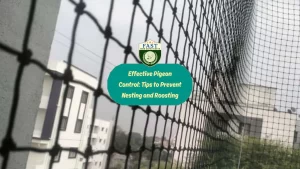Pigeons, while often considered harmless, can pose several disadvantages to both urban environments and human health. Here are some key drawbacks:

- Health Risks: Pigeons are carriers of various diseases, including salmonella, histoplasmosis, and cryptococcosis, which can be transmitted to humans through contact with droppings or feathers.
- Property Damage: Pigeon droppings are acidic and can corrode building materials, causing damage to structures, statues, vehicles, and other property. Accumulated droppings can also create slippery surfaces, posing a slip-and-fall hazard.
- Nuisance Behavior: Pigeons can become a nuisance with their cooing sounds, aggressive behavior, and tendency to roost and nest in inconvenient or unsightly locations such as building ledges, balconies, and air conditioning units.
- Environmental Impact: Pigeon droppings contribute to environmental pollution by contaminating soil and waterways with excess nutrients. Additionally, large populations of pigeons can disrupt local ecosystems and compete with native bird species for resources.
- Aesthetic Concerns: Pigeon droppings deface buildings, monuments, and public spaces, detracting from their aesthetic appeal and requiring frequent cleaning and maintenance efforts.
To address these disadvantages, it’s essential to implement effective pigeon control measures, such as:
- Installing bird spikes, netting, or deterrent devices to prevent pigeons from roosting and nesting in unwanted areas.
- Implementing habitat modification strategies to remove food and water sources that attract pigeons to urban environments.
- Conducting regular cleaning and sanitation efforts to remove pigeon droppings and minimize health risks.
- Educating the public about the importance of responsible pigeon management practices and discouraging behaviors that encourage pigeon populations to thrive.
By proactively addressing the disadvantages of pigeons and implementing appropriate control measures, cities and communities can mitigate the negative impacts of pigeon populations and create safer, healthier, and more aesthetically pleasing environments for residents and visitors alike.






